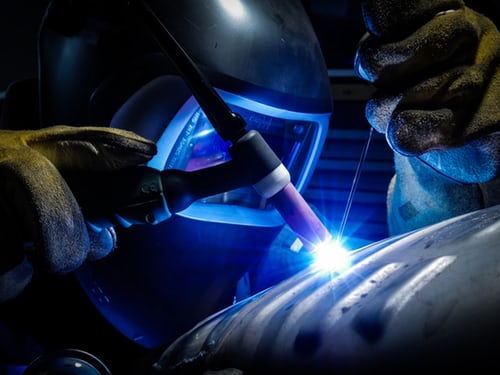Running a Welding Procedure Qualification Record (WPQR)

Running a Welding Procedure Qualification Record (WPQR) requires any company to understand the following key factors or 'essential variables', prior to contacting a certified third party to witness this qualification.
- What codes and standards are invoked by the client?
- What welding process(es) do I need to use?
- Parent material and “its grouping”
- Material thickness range
- Welding configuration (Butt, Fillets, Branch etc.)
- Single run or multi run
- Diameter range if required
- What welding positions do I need to cover
- Filler material used
- Welding transfer modes
- Welding shielding gases or fluxes
- Heat input rang
- Preheat temperature / inter-pass temperature
- Post- heating for hydrogen release or heat treatment
- Non-destructive and destructive testing
- Any other client requirements not provided by codes or standards.
With the above list in mind it is time to contact a third party / examining body like “The Welding Development Centre”, who are impartial to the manufacturer.
What to expect on the day?
Any third party are there to witness each WPQR and ensure all testing is carried out in line with international codes and standards. We are here to look for conformity and not dig for non-conformance's.
Documentation which should be in place for review prior to starting any WPQR activity includes; parent and filler material certification, p-WPS (preliminary welding procedure specification) or WPS (welding procedure specification). Additionally, Calibration reports for welding equipment, contact thermometers, a competent welder or welding operator “select your best welder for each process”, run data sheets or a PAM’s (portable, arc, monitoring) unit.
The examiner will inspect the joint set up, ensure all the above information is correct and take photographic evidence for an examination report (some third parties will not provide a report!). Each sample will be given a unique identification and if welding in position the 12°clock position will be marked on the sample.
Time to arc up!
Each arc welding pass will be monitored for amperage, voltage and travel speed, this is to ensure heat inputs or arc energy is understood. On completion of the weld, a visual inspection shall be carried out by the third party, the manufacturer may also conduct this NDT (Non-Destructive Testing) method. Once again, we advise you receive a visual inspection report from your third party as evidence of inspections completed on the day of the test.
Destructive testing and NDT
Each code or standard will outline the testing need for the WPQR. Please note: your client may have addendums to the international standard / code, and this must be considered. You will likely now need to sub-contract, these activities to an UKAS ISO 17025 accredited laboratory or a local NDT facility with BS EN 9712 Level III approved procedures and certified personal, you will now need a “test request sheet” or notification of inspection. This is ensuring technical information is passed down to your sub-contractor.
Build the doc pack
Now it is time to put the whole document together for third party approval. Your third party will approve, stamp, and return your WPQR.
Now it is time to write a WPS!
The Welding Development Centre offers a turnkey solution for WPQR’s. This process is often very technical, and we are here to support you the entire way.